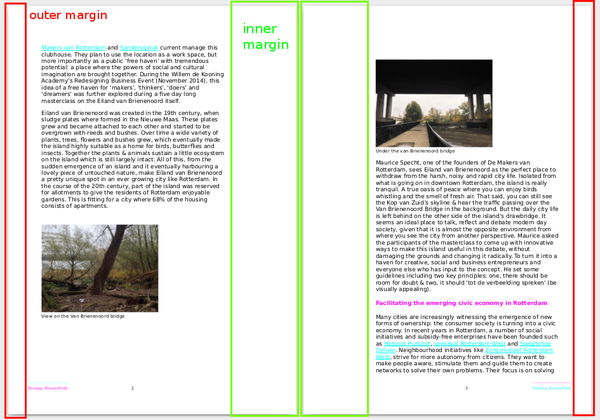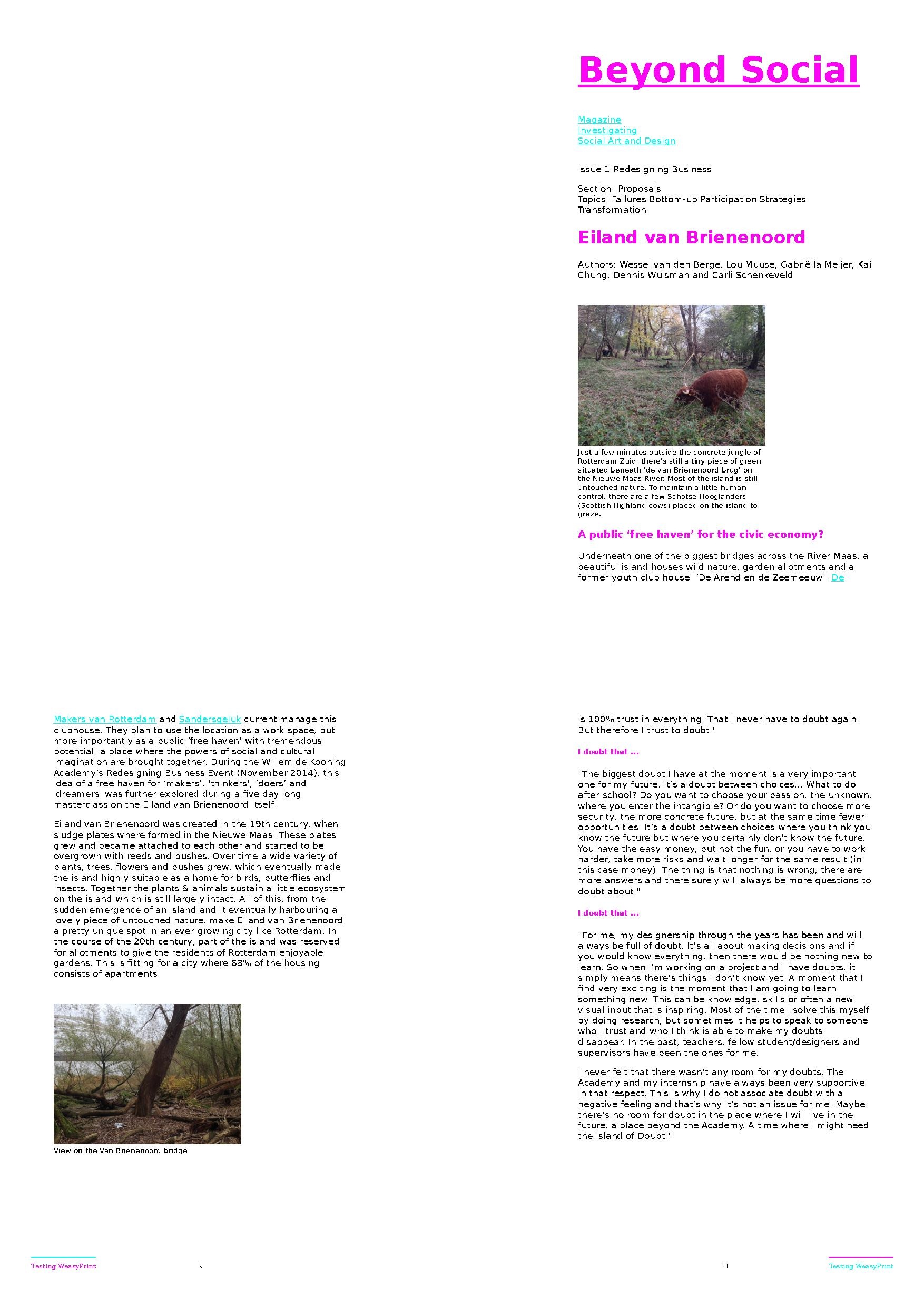Difference between revisions of "Weasy Print"
| (2 intermediate revisions by the same user not shown) | |||
| Line 11: | Line 11: | ||
Follow the installation instructions in https://weasyprint.readthedocs.io/en/stable/install.html | Follow the installation instructions in https://weasyprint.readthedocs.io/en/stable/install.html | ||
===Install dependencies=== | |||
'''On Mac:''' | |||
You need to have [https://brew.sh/ brew] installed. | |||
Then run | |||
echo -e "export LC_ALL=en_US.UTF-8\nexport LANG=en_US.UTF-8" >> ~/.bash_profile | |||
brew install cairo pango gdk-pixbuf libxml2 libxslt libffi | |||
'''On Debian/Ubuntu:''' | |||
sudo apt-get install libxml2-dev libxslt-dev libffi-dev libcairo2-dev libpango1.0-dev | |||
After installing Weasyprint dependencies, for your operating system | After installing Weasyprint dependencies, for your operating system | ||
Install Weasyprint using Python package installed: pip | ===Install WeasyPrint=== | ||
Install Weasyprint using Python package installed: pip ([https://pip.pypa.io/en/stable/installing/#installing-with-get-pip-py how to install pip]) | |||
pip3 install WeasyPrint | |||
==Testing Weasy Print== | ==Testing Weasy Print== | ||
Latest revision as of 12:11, 21 May 2019
Weasyprint is a python library, for creating PDF documents from HTML + CSS documents.
It supports CSS 2.1 Specification, including the Paged media properties, making one the best tools around to produce PDF documents from HTML + CCS.
Documentation
https://weasyprint.readthedocs.io
Installing weasyprint
Follow the installation instructions in https://weasyprint.readthedocs.io/en/stable/install.html
Install dependencies
On Mac: You need to have brew installed.
Then run
echo -e "export LC_ALL=en_US.UTF-8\nexport LANG=en_US.UTF-8" >> ~/.bash_profile
brew install cairo pango gdk-pixbuf libxml2 libxslt libffi
On Debian/Ubuntu:
sudo apt-get install libxml2-dev libxslt-dev libffi-dev libcairo2-dev libpango1.0-dev
After installing Weasyprint dependencies, for your operating system
Install WeasyPrint
Install Weasyprint using Python package installed: pip (how to install pip)
pip3 install WeasyPrint
Testing Weasy Print
At the first glance Weasy Print sounds promising, so why not try to see how well does it performs conversions from HTML to PDF?
The following PDF results from the conversion of the Beyond Social's article Eiland van Brienenoord onto a PDF using Weasy Print.
The CSS style-sheet that gave origin the PDF is located at the end of this page
Running
The standalone command weasyprint can produce a PDF, simply with the instructions:
weasyprint EilandvanBrienenoord.html -s style.css ouput.pdf
Where:
EilandvanBrienenoord.html- is the souce HTML file (could also be a URL)-s- is the option for a CSS stylesheetouput.pdf- the resulting PDF
@page
@page CSS rule that determines orientation and page size is successfully rendered in the PDF.
@page {
size: A5 portrait;
}
@page left @page right
Option for the left and right pages, such as the margin sizes, which have to alternate in order to produce a bound work, are correctly rendered.
@page:right {
margin-left: 3cm; /*inner margin*/
margin-right:1cm; /*outer margin*/
}
@page:left {
margin-right: 3cm; /*inner margin*/
margin-left:1cm; /*outer margin*/
}
@bottom
Weasy-print also applies consistently @bottom rules, including page counting.
@bottom-right {
margin: 10pt 0 30pt 0;
border-top: .25pt solid #FF05F6;
content: "Testing WeasyPrint";
font-size: 6pt;
color: #00FFF2;
}
@bottom-center {
margin: 10pt 0 30pt 0;
content: counter(page);
font-size: 6pt;
}
CSS Custom Fonts
Weasy Print does not support CSS's (@font-face) rule.
Yet it can use fonts available in your system.
On Linux `fc-list` will give you a list of fonts installed in your system
Imposition
There is no mechanism to performs page impositions.
However, it is possible to perform imposition over the Weasy Print-generated PDF with software such as BookletImposer, jPDF Tweak, pdftool, or PDFtk.
More is needed
These tests and prototypes are far from exhaustive.
It is still unclear whether Weasy Print, CSS and HTML can produce quality PDFs, ready to be sent to a printer in order to produce paper-bound publication. Yet the results seem promising.
More experimentation, prototypes, and feedback is needed in order to make a informed critique.
And contributions to Weasy Print, can only help.
CSS style-sheet
@page {
size: A5 portrait;
}
@page:right {
margin-left: 3cm; /*inner*/
margin-right:1cm; /*outer*/
@bottom-right {
margin: 10pt 0 30pt 0;
border-top: .25pt solid #FF05F6;
content: "Testing WeasyPrint";
font-size: 6pt;
color: #00FFF2;
}
@bottom-center {
margin: 10pt 0 30pt 0;
content: counter(page);
font-size: 6pt;
}
}
@page:left {
margin-right: 3cm; /*inner*/
margin-left:1cm; /*outer*/
@bottom-left {
margin: 10pt 0 30pt 0;
border-top: .25pt solid #00FFF2;
content: "Testing WeasyPrint";
font-size: 6pt;
color: #FF05F6;
}
@bottom-center {
margin: 10pt 0 30pt 0;
content: counter(page);
font-size: 6pt;
}
}
@page:first {
@bottom-center { content: ""; }
@bottom-right { content: ""; }
}
body{
font-size:8pt;
font-family: sans;
padding: 0.5cm;
}
a, a:visited, a:hover {color:#00FFF2;}
hr { color:#00FFF2;
border:solid 1px #00FFF2;
}
div.title-beyond h1 {font-size:4em;
margin-top:-40px;
} /*title*/
h1,h2,h3,h4,h5 {color:#FF05F6; }
figure {
margin-left:0px;
padding-top:0.5cm;
}
img{ width: 6cm; }
figcaption { font-size:0.8em;
width:6cm;
}
tutorials & posts on Weasy Print
http://diethardsteiner.github.io/reporting/2015/02/17/CSS-for-print.html


